#@SovietUnion
Explore tagged Tumblr posts
Text
The Sibling Divide: Russia & Ukraine – A Family Story
The Sibling Divide: Russia & Ukraine – A Family Story Imagine a large, old family living on a massive estate for centuries. This family, despite having different personalities and traditions, has always lived together. Their shared history is deep—same ancestors, same culture, same struggles.For centuries, Ukraine was not a separate country, but a key part of the Russian world. It was known as…
#@borders#@conflict#@culture#@discipline#@division#@falsehistory#@family#@Geopolitics#@historicalcontext#@identity#@independence#@KievanRus#@language#@manipulation#@NATO#@patience#@Putin#@Russia#@sovereignty#@SovietUnion#@Stalin#@strategy#@truth#@Ukraine#@UN#@unity#@USSR#@war#@Westerninfluence#History
0 notes
Text

Stalin murals still in the Caucasus today
#stalin#rock#publicart#cult of personality#politics#ussr#sovietunion#politicalleaders#o11#livinghistory#russia#nature#mountain
546 notes
·
View notes
Text

Hungarian soldiers examine a Soviet T-28 medium tank, abandoned by the roadside - Eastern Front, 1941
#world war two#ww2#1940s#worldwar2photos#wwii#history#ww2 history#wwii era#1941#world war 2#ww2history#t28#tank#eastern front#hungarian#sovietunion#soviet#soviet union#abandoned
110 notes
·
View notes
Photo

The Red Army in WWII
The Red Army of the USSR began the Second World War (1939-45) with a series of shocking defeats, but from late 1942, it rallied and held on to key cities like the capital Moscow, Leningrad (Saint Petersburg), and Stalingrad (Volgograd). Then, through 1943 to the war's end, the Red Army accumulated a string of major victories such as the battles of Smolensk, Kursk, and Berlin, which saw the defeat of Nazi Germany in May 1945.
Formation & Evolution
The Soviet Union's Red Army was formed in 1918 following the Bolshevik October Revolution of 1917, which swept away the rule of the tsars. The Red Army was officially called the RKKA or Red Army of Workers and Peasants (Raboche-Krest'yanskaya Krasnaya Armiya), red being the colour most associated with Bolshevism. It officially became the Soviet Army in 1944.
The Red Army was immediately required to fight the White Army, that is, supporters of the monarchy and anti-Bolsheviks, in a fierce civil war (1917-22). The Bolshevik victory in this war was achieved thanks to the increasing professionalism of the Red Army. The move from a revolutionary militia to a professional national army is credited to Leon Trotsky (1879-1940) and the incorporation of around 48,000 officers and over 200,000 non-commissioned officers from the old imperial army.
In its daily operations, the Red Army was heavily influenced by the ideas of Bolshevism. For example, the word 'officer' was prohibited and only reinstated in 1935. Rather, the term 'commander' was used, and each commander was obliged to report to a political commissar, who would give their approval to the commander's orders. This dual system was weakened considerably through practical realities and by the demands of WWII, when most commanders were left to make military decisions while the commissars restricted themselves to political instruction and party work. When the USSR was attacked by Nazi Germany in June 1942 (Operation Barbarossa), the dual system was revived somewhat before weakening again as the war progressed. Nevertheless, there remained, throughout the conflict, tensions between these two different groups of command personnel.
The leader of the USSR from 1924 was Joseph Stalin (1878-1953), and he harboured a serious distrust of his own army, especially when he thought it was supporting his chief political rival Nikolai Bukharin (1888-1938). For this reason, Stalin purged the Red Army:
Some 35,000 officers out of an officer corps of roughly 80,000 fell victim to the purges; among them three of the five Marshals of the Soviet Union, all eleven deputies of the commissar for war, 75 of the 85 corps commanders, and 110 out of the 195 divisional commanders were killed.
(Dear, 962)
In 1941, seeing the damage he had done to the Red Army's ability to actually function, Stalin brought back around 4,000 officers who had been sent to prison camps.
Read More
⇒ The Red Army in WWII
25 notes
·
View notes
Text
On "Leftist Infighting" | The Historical Meaning of the Inner-Party Struggle in Russia (1910) by Lenin. Marxist audiobook + discussion.
youtube
#socialist#communist#marxism#marxismleninism#politics#ussr#sovietunion#trotsky#youtube#communism#socialism#marxist#Youtube
11 notes
·
View notes
Text

Rare Vintage Glitter Lava Lamp from the Soviet Union 425 euros
#lavalamp#bauhaus#loft#desklamp#vintagelavalamp#industrialhomedecor#vintagelighting#industriallighting#vintagelightingforsale#industrialstyle#loftstyle#loftdesign#bauhaushomedecor#antiques#machineage#antiquelamp#homeoffice#workfromhome#lightingdesign#homeinspo#architect#livingroomdesign#interiordesign#interiorstyle#sovietunion#homeofficeideas#eclectichome#homestyle#homestyling#interiors
18 notes
·
View notes
Text
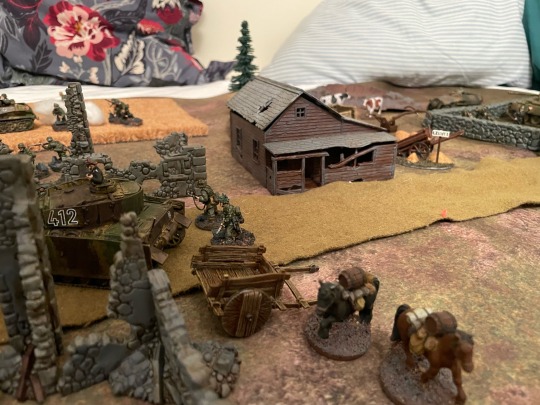
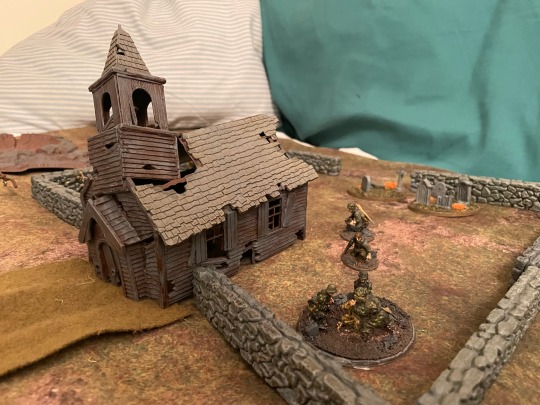
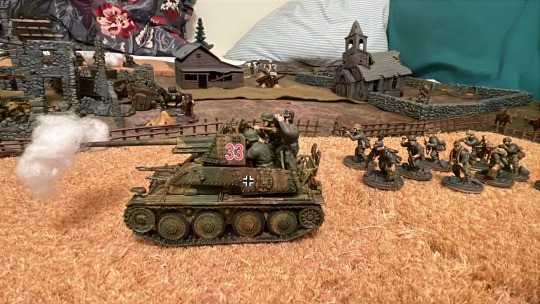
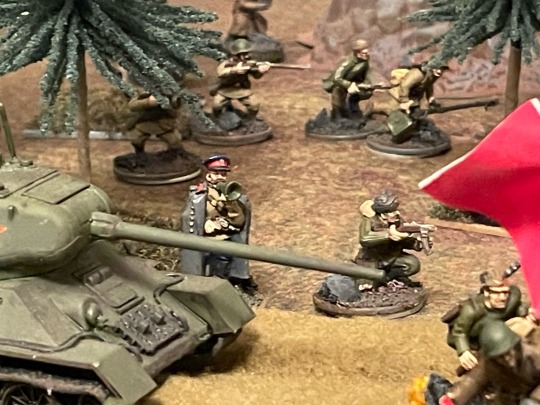
#history#miniatures#military history#historic miniatures#world war 2#world war ii#germanarmy#russia#sovietunion
12 notes
·
View notes
Quote
Amazon and central planning in the Soviet Union have a great deal of commonality. The difference is, of course, in the case of Amazon, it’s owned by Jeff Bezos and it is optimized. The code, the computer program, the algorithm is optimized in order to maximize his cloud rent. Whereas in the case of the Soviet Union, it was there to optimize according to the will of the central committee.
Yanis Varoufakis
8 notes
·
View notes
Text
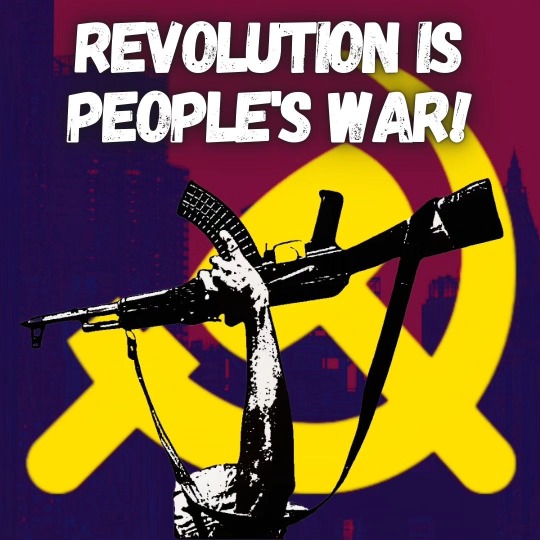
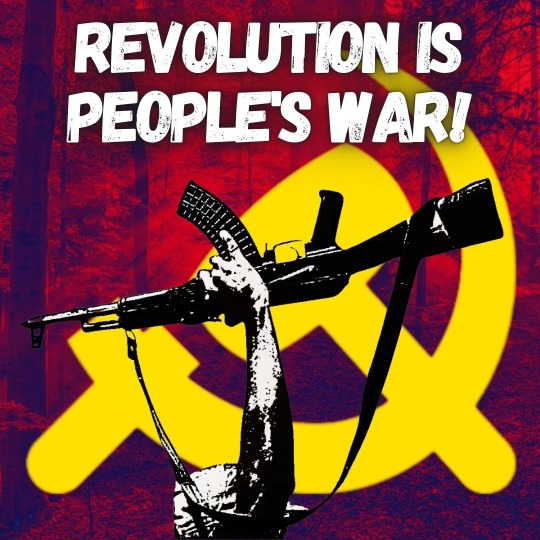
Revolution is understood by Maoists today as people’s war. People’s war is the masses’ own war and is led by the communist party, which is the proletariat’s only party. The people’s war must initially destroy the enemy’s power with violence and create a vacuum of power in some areas, and eventually in more and more areas. In this vacuum of power, the proletariat must construct its own power in the form of peoples’ committees, which in the start must be clandestine (secret) and must exercise the proletariat’s state power under development. The new power resolves the problem of the masses by mobilizing the masses themselves and by basing itself on mass organizations that organize the masses, as well as on the armed power of the people’s army that is led directly by the communist party.
That revolution is inevitable is shown by all of history. No classes have voluntarily given up their power. The bourgeoisie in particular has shown that they are willing to do whatever it takes to hold onto their power. They wage wars of extermination, carry out genocides, torture people, persecute and murder, all to protect their power and their profits. This is no different in the imperialist countries, and rather the contrary. Those who wish to see examples of the brutality that the imperialists are willing to unleash on the masses can look at the US and how the Yankee state liquidated Black leaders in the 1960s and 70s. The Norwegian bourgeoisie dropped hundreds of bombs on Libya in 2011—they are willing to take things much further to hold onto their power.
Revolution, i.e. people’s war, is necessary on one side to destroy the enemy’s forces, and on the other side to build up the proletariat’s own power, to seize and defend the political power for the proletariat, and primarily the latter side. This is a universal law that applies for all countries in the world without exception.
WHAT IS REVOLUTION?
Tjen Folket Media
#maoism#chairman gonzalo#marxist leninist#communism#chairmangonzalo#fuckcapitalism#sovietunion#communist#urss#stalin#proletariat#communist party of china
20 notes
·
View notes
Photo
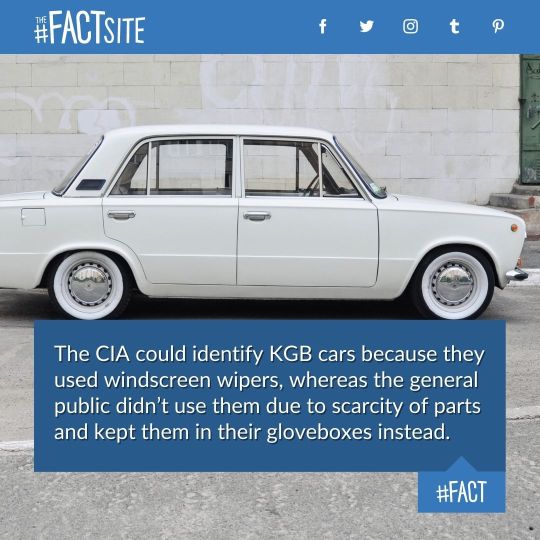
The CIA could identify KGB cars because they used windscreen wipers, whereas the general public didn’t use them due to scarcity of parts and kept them in their gloveboxes instead. #FACT
#the fact site#history#history facts#history lesson#fun facts#america#united states#america facts#war#peace#war facts#sovietunion#cia#kgb
35 notes
·
View notes
Text
Wallpiece Soviet Russia Felix Dzerzhinsky Big 1976

Wallpiece made in the Soviet Union with the image of Felix Dzerzhinsky. Very big wall plate. Felix Dzerzhinsky image made of aluminum with a kind of cardboard back. It has a gold border, red background and Felix is in silver (aluminum) and black. A bit of damage and paint damage after 48 years. It is an official piece and is state stamped on the back. You hardly see pieces that big anymore. Felix Edmundovich Dzerzhinsky (1877-1926), nicknamed “Iron Felix”, was a Bolshevik revolutionary and official. Born into Polish nobility, from 1917 until his death in 1926 Dzerzhinsky led the first two Soviet state-security organizations, the Cheka and the OGPU, establishing a secret police for the post-revolutionary Soviet regime. He was one of the architects of the KGB. Dzerzhinsky spent four and a half years in tsarist prisons. Dzerzhinsky was beaten frequently by the Russian prison guards, which caused the permanent disfigurement of his jaw and mouth. In 1916, Dzerzhinsky was moved to the Moscow Butyrka prison, where he was soon hospitalized because the chains that he was forced to wear had caused severe cramps in his legs. Despite the prospects of amputation, Dzerzhinsky recovered and was put to labor sewing military uniforms. Felix Dzerzhinsky was freed from prison after the February Revolution of 1917. Lenin regarded Felix Dzerzhinsky as a revolutionary hero and appointed him to organize a force to combat internal threats known as Cheka. The Cheka undertook drastic measures as thousands of political opponents and saboteurs were eliminated. Besides his leadership of the secret police, Dzerzhinsky also took on a number of other roles; he led the fight against typhus in 1918, was chair of the Commissariat for Internal Affairs from 1919 to 1923, initiated a vast orphanage construction program, chaired the Transport Commissariat, organised the embalming of Lenin’s body in 1924 and chaired the Society of Friends of Soviet Cinema. A 15-ton iron monument of Dzerzhinsky, which once dominated the Lubyanka Square in Moscow, near the KGB headquarters, also became known as Iron Felix. For sale at www.propagandaworld.org
3 notes
·
View notes
Text
There Was No Communism in the Soviet Union

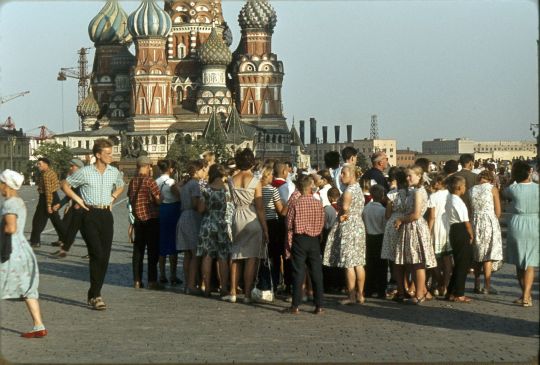
According to Marxist theory, communism is a stateless, classless society that emerges after a socialist phase. The Soviet Union, however, never achieved this truly classless state. Instead, it established a one-party system that maintained strict control over political and economic life.
Socialism VS Communism. The Soviet Union instituted policies that were more aligned with Marxist-Leninist socialism than with true communism. The state maintained tight control over production and distribution, leading to societal hierarchies rather than the egalitarian structure.
Totalitarianism. The Soviet regime, particularly under Stalin, adopted a totalitarian approach that suppressed dissent and centralized power. This led to a significant deviation from the democratic and egalitarian principles of communism.
Economic Systems. While the Soviet Union aimed for a planned economy without private ownership, the bureaucratic management of this system did not lead to the liberation of the working class. Instead, it often resulted in inefficiencies and a new class of bureaucrats who wielded power over the proletariat.
Repression. In a truly classless society, there would be no ruling class to exert repressive measures over an oppressed class. Communism promotes the idea of collective ownership of the means of production. If the resources and means of production are owned collectively, it would logically follow that no one individual or group could wield disproportionate power to repress others. Decision-making processes would ideally be democratic and based on collective consensus, which would further reduce the potential for repression. A society devoted to equality and mutual aid would theoretically be less likely to engage in repressive actions against its own members.
#SovietUnion#Communism#Socialism#History#PoliticalHistory#SovietReality#PoliticalIdeologies#SovietSociety#BeyondTheIdeology#MarxistTheory#ClasslessSociety
5 notes
·
View notes
Text

https://www.rferl.org/a/swamp-thing-russian-town-confronts-past-as-stalin-statue-emerges-from-the-deep/29450820.html
Accidental excavation of Stalin statue in Russian town, 2018
#stalin#dictator#archeology#excavation#statue#installation#history#relic#unearth#ussr#russia#sovietunion#coldwar
21 notes
·
View notes
Text
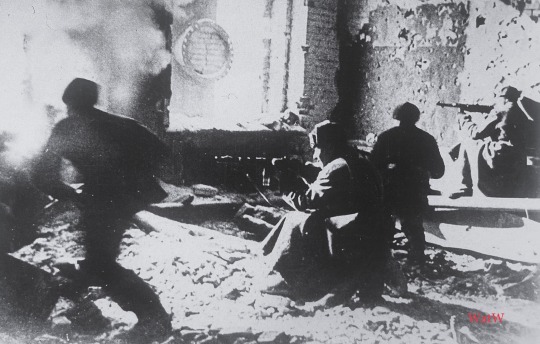
Soviet soldiers use a ruined building for cover as they attempt to defend Stalingrad -1942
#world war two#ww2#worldwar2photos#history#1940s#ww2 history#wwii#world war 2#ww2history#wwii era#eastern front#1942#stalingrad#sovietunion#soviet union#red army
313 notes
·
View notes
Photo

Eyewitness Accounts of WWII's Eastern Front
The Eastern Front (1941-5), called the Western Front or Great Patriotic War by the Soviets, was by far the bloodiest of the Second World War (1939-45). In this article, the memories of those who experienced the conflict firsthand are presented, both from the German and Soviet side. Also presented are the memories of civilians who were reluctantly caught in the burning stage lights of this most terrible theatre of war.
Operation Barbarossa
Many German and Axis soldiers started the campaign with optimism, believing Hitler's claim that the USSR's Red Army was rotten and would soon crumble. One German soldier, Bernhard Bechler, reassured his sister as he departed for the Eastern Front:
I said 'Listen, we will part now. In a few weeks I'll ring you from Moscow.'…I was utterly convinced that this would happen, and I was in fact proud of our plans.
(Rees, 40)
Nazi propaganda had also spread the message that the Red Army was a brutal and unprincipled fighting force that should be given no quarter. This view was reinforced by experience for many German soldiers. Walter Schaefer-Kehnert, an artillery officer in a panzer division, recalls one episode:
When they counter-attacked and we had to leave the wounded behind and then we came back again, we found all the wounded had had their heads split open with short infantry blades. Now you can imagine our soldiers, when you see your wounded friend has been brutally killed, then they were furious.
(Rees, 50-1)
Axis soldiers were also told that they were fighting a war against Bolshevism, the main enemy of Nazism, and so they were ordered to shoot political officers (commissars) serving in the Red Army. Walter Traphöner remembers:
…when we caught any of them, they just had to be killed. We never really asked about the reasons for anything much. I mean they were just blokes who were supporting their system, just like with us. The commissars just had to be killed…we wanted to prevent the Bolsheviks from conquering the world.
(Rees, 51)
The new front went well for the invaders in the summer of 1941. The Red Army in WWII began the conflict in disarray. The Soviets were poorly organised, poorly equipped, and caught by surprise by the sheer scale of the Axis offensive. Viktor Strazdovski, then just 18, recalls:
The 60-millimetre guns that we were given were trophies left from World War I – they didn't have modern sighting devices. And we had only one rifle between five soldiers…When I was sent to the place where the Germans broke our defence line, you can imagine how we felt – we felt we were doomed. There were four of us, with two rifles between us, and we didn't know in which direction we would run into the Germans. The woods around us were ablaze. On the one hand we couldn't disobey our order, but on the other hand we felt doomed.
(Rees, 65)
Read More
⇒ Eyewitness Accounts of WWII's Eastern Front
#History#German-SovietWar#EasternFront#GreatPatrioticWar#NaziGermany#SecondWorldWar#SovietUnion#WWII#WHE
17 notes
·
View notes
Text
Golden Public Lavatories | "The Importance of Gold Now and After the Complete Victory of Socialism" (1921) Lenin. Human-read audiobook + discussion.
youtube
#marxist#marxism#socialist#socialism#communist#communism#ussr#sovietunion#revolution#marxismleninism#ultraleftism#youtube#politics#economy#Youtube
8 notes
·
View notes